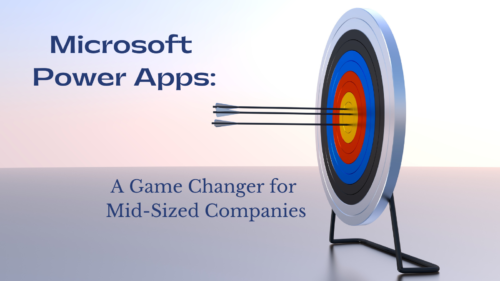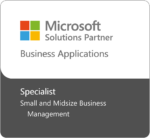
For the last 15 years, I’ve been a CRM guy. Specifically, I’ve worked with Microsoft CRM (MBS CRM to Dynamics CRM to Dynamics 365 CE). During that period of time, I’ve often told people that I look for spreadsheets so that I can kill them.
Businesses love to manage processes, maintain data, and build reports in Microsoft Excel spreadsheets. And why not? It’s easy to do, fast and simple to set up, and when you need a solution TODAY to track incoming leads, Excel is the first place most people turn. The problems with Excel don’t show up until weeks, months, or sometimes years later. Common problems include when more than one person needs to see the data tracked, or you need to be able to understand trends, or the spreadsheet keeps getting corrupted or, like one CFO I met, you need to upgrade your version the day the new one comes out because you need more columns.
Whenever possible, I would replace spreadsheet-based processes with CRM processes. In those days we liked to call it “xRM,” meaning “any” Relationship Management. It definitely helped to get the spreadsheet data into a managed and centralized database, with security features, enterprise backups, and other built-in capabilities and reporting.
The challenge with this approach over the years has been the cost, specifically the cost to initially implement and deploy a CRM/xRM solution. Usually these projects ranged from a few hundred to a few thousand hours, but many organizations weren’t able to fund the consulting fees, the licensing costs, the lost productivity time to devoting internal employees to a months-long project, or all of the above. Larger companies could afford it, but smaller businesses often found these projects difficult to stomach. As a result, they were stuck with their spreadsheets and relying solely on that one person in accounting who knew how to pull that one critical report.
Then along came Microsoft Power Apps, the flashy front man to the Power Platform ensemble. For most larger organizations (and, honestly, most of the old CRM crowd like me), Power Apps is viewed as a “last mile” solution. In other words, you get all of your real work done in Microsoft Dynamics 365, and then you make it easy or mobile or flashy in your Power App.
While this is a perfectly valid and reasonable use of Power Apps, this is missing out on the truth behind Power Apps: It is a game changer for smaller businesses! With Power Apps, the barrier to entry is significantly lower than going for a full Dynamics (or any other large-scale software) implementation. You can build an app to replace a single spreadsheet, put that data into Dataverse, add a user interface to make it easy for users, and gain the benefits of an enterprise-grade solution — all with a small project and lower investment.
Starting small and going with a crawl-walk-run approach actually works with Power Apps because you can keep building point solutions with an eye to the future. Every spreadsheet ends up in the same spot, all of the technology is the same, you can plug into Power BI with ease, and you can perform scheduled or triggered automated processes with Power Automate. All of this is available at the scale you need it today with the capability to expand in the future.
You don’t even need to put your data into Dataverse for a Power App to help. Have a legacy database that your salespeople hate to use yet you need to maintain three fields in that database? Build a Power App, use one of the hundreds of connectors to connect to your legacy system and let the users just update those fields in their app. Now the sales users can avoid the system they hate, and new salespeople don’t need to learn the legacy system at all. Plus, Power Apps is designed to support mobile use, so they can do it all on their phones. Happy users means happy data!
For more information on Power Apps, check out our webinar on January 20.








